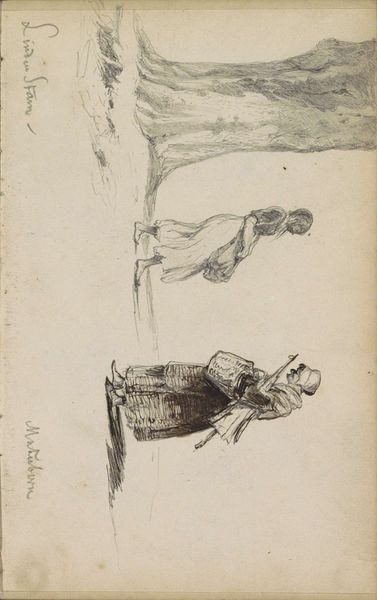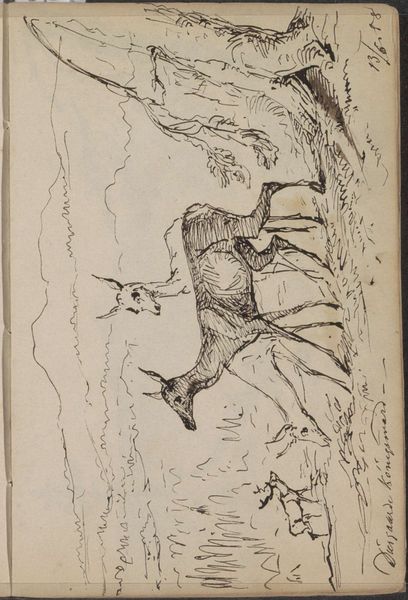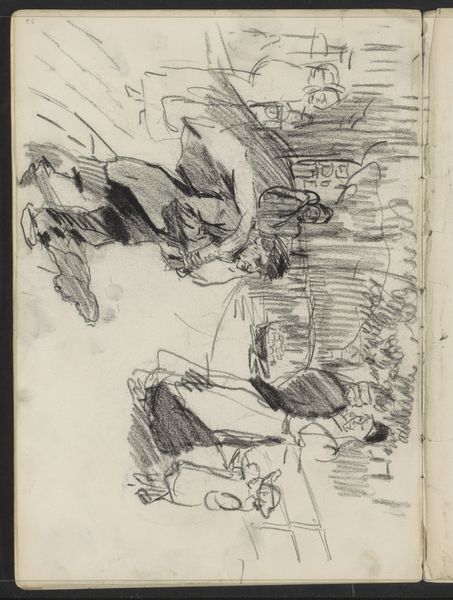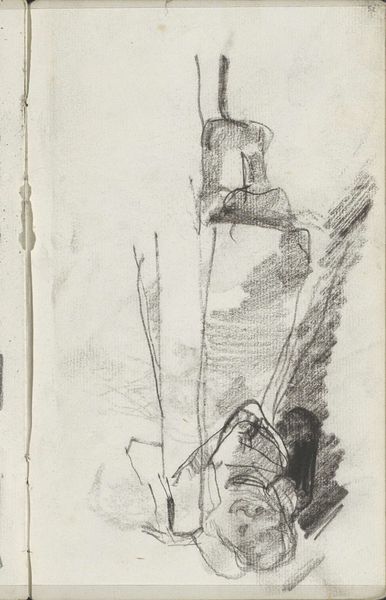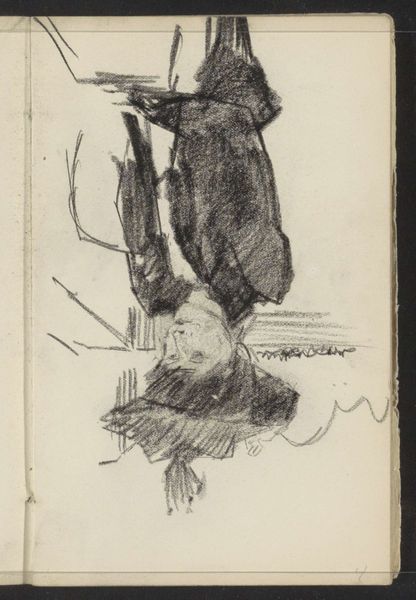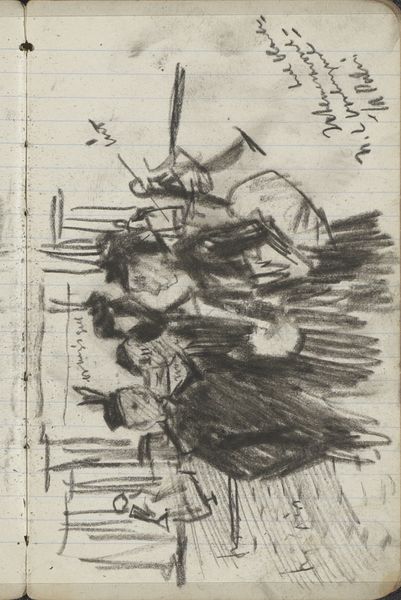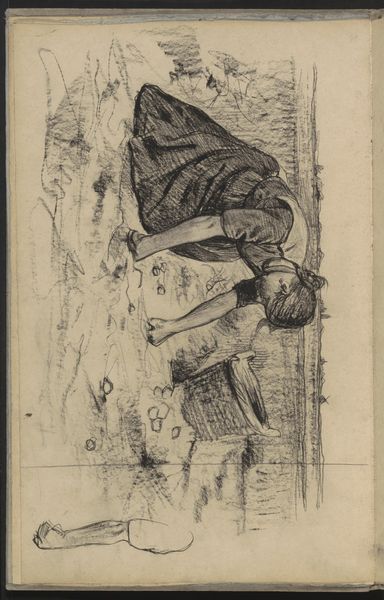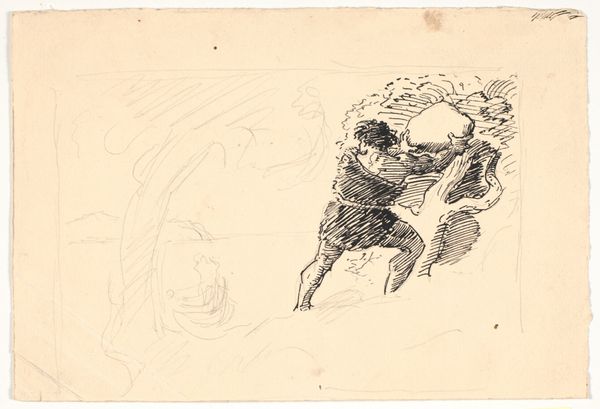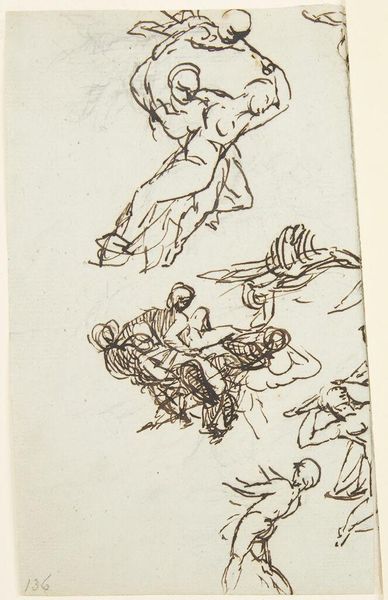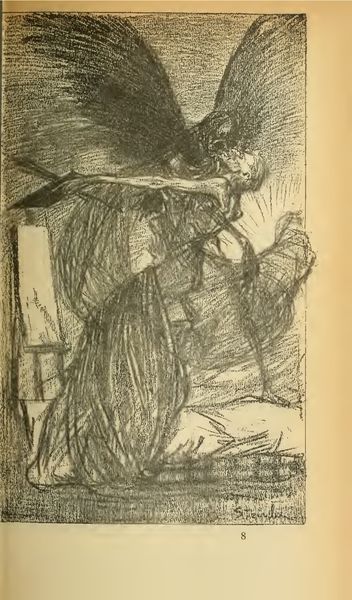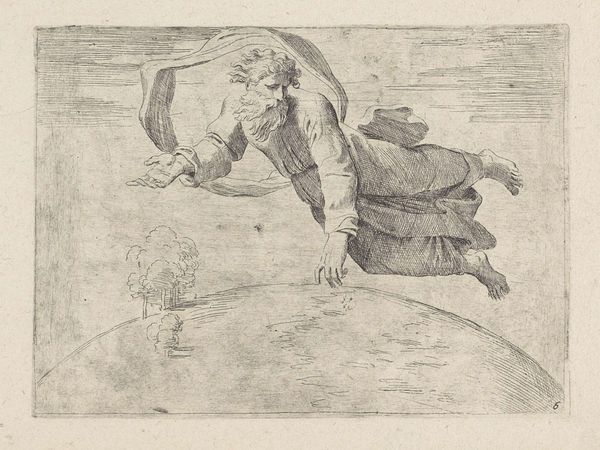
drawing, paper, ink
#
drawing
#
toned paper
#
light pencil work
#
pen sketch
#
pencil sketch
#
landscape
#
paper
#
personal sketchbook
#
ink
#
ink drawing experimentation
#
pen-ink sketch
#
pen work
#
sketchbook drawing
#
genre-painting
#
sketchbook art
#
realism
Copyright: Rijks Museum: Open Domain
Curator: I find the rapid strokes and implied forms of "Twee meisjes met korenschoven," or "Two Girls with Sheaves of Corn," by Jan Willem van Borselen quite captivating. Dating back to 1868, it's a lovely example of the artist’s quick sketches on toned paper. Editor: Immediately, the visible, hurried nature of the marks speak volumes about the labor depicted; it’s not romanticized, it feels real. Curator: Indeed, the structure seems almost provisional. Notice the deliberate choices in composition – the positioning of the figures, the way they are oriented, how that directs the eye. Semiotically, what does that rapid capture convey? Editor: The pen-and-ink medium lends itself perfectly to capturing a transient moment, emphasizing the ephemeral nature of agricultural labor. It is very tactile; you see the physical process of Borselen rapidly building up these scenes. What did their workday actually look like? Curator: Observe, if you will, the intricate web of lines that define the figures. There's a stark contrast between the areas filled with dense hatching and the bare patches of paper. It creates a visual rhythm – almost musical. Editor: And think about the accessibility of these materials. This wasn’t some grand commission; it speaks to art as a tool of documentation, of seeing, and understanding the working class's role in society through observation and rendering that labor in his own hand. Curator: Precisely! The tension lies in this intersection. It's not just about rendering figures; it is about harnessing the raw expressive power embedded within a drawing on toned paper to elicit a particular response. Editor: For me, Borselen shows that art-making is an inherently labor-intensive act—an endeavor intimately tied to societal functions and documentation. Curator: A fruitful convergence, I must admit! The artwork resonates precisely because the artistic intention has clear formal structures as well as socio-historical reverberations. Editor: Right, seeing art this way is a productive way to ensure cultural stewardship remains dynamic and attentive to social contexts and working processes.
Comments
No comments
Be the first to comment and join the conversation on the ultimate creative platform.
